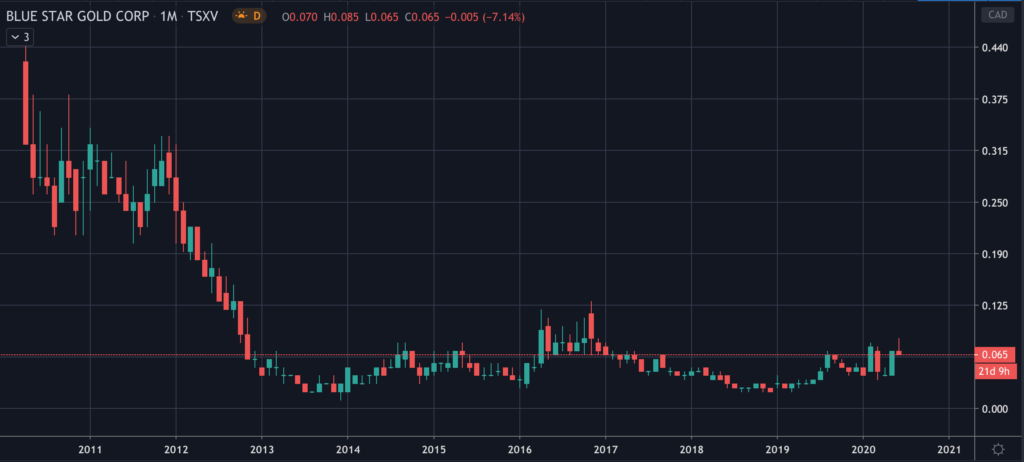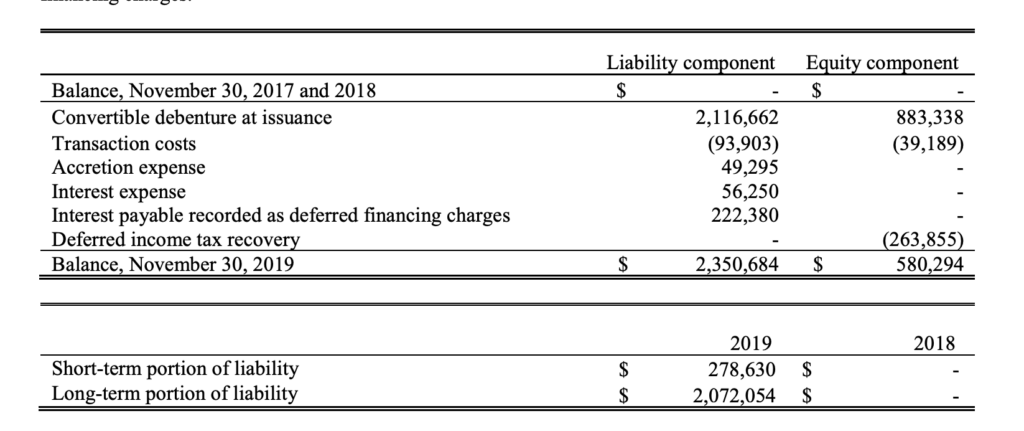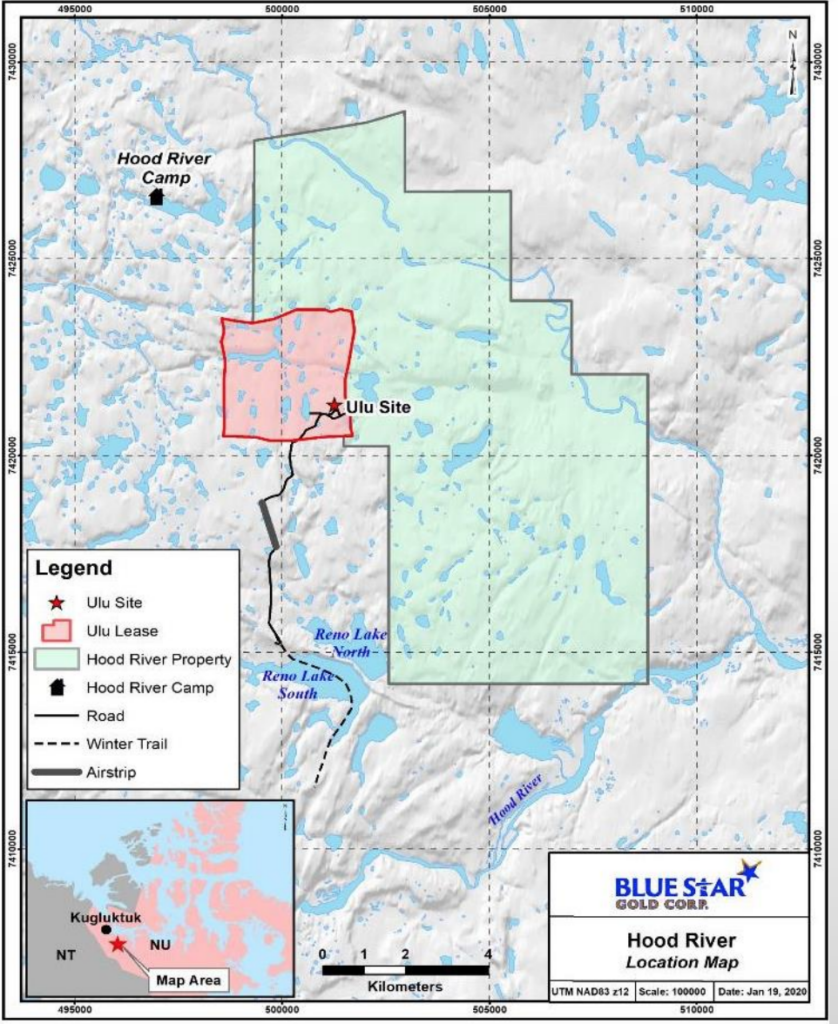Common Stock: Blue Star Gold Corporation (TSXV:BAU)
Current Market Price: $.065 CAD
Market Capitalization: $8.5 million CAD
**Note: All values in the article are expressed in Canadian Dollars (CAD) unless otherwise noted.

Blue Star Gold Stock – Summary of the Company
Blue Star is a mineral exploration company focused on the acquisition and exploration of mineral properties in the Naunavut region of Canada. In 2019, the exercised their option to acquire the Ulu Property, which they now own 100%. They also own the Hood River property in the same region. Blue Star was founded in 2007 and is headquartered in Vancouver Canada.
Revenue and Cost Analysis
Blue Star does not have any properties that are currently producing and therefore does not have any revenue. The company consistently runs a net loss and is likely to continue to do so for the foreseeable future.
In 2019, the company had a net loss of $1.4 million. Their largest expenses were compensation related, including share based compensation.
Blue Star Gold – Royalty and Streaming Agreements
The Hood River property is subject to a 3% net smelter royalty, the company has the option to buy back up to 2% of this royalty.
Balance Sheet Analysis
Blue Star has a weak balance sheet with low liquidity and high levels of convertible debt. The company will need to raise additional capital to continue as a going concern, which will likely further impair its balance sheet.
Blue Star Gold – Debt Analysis
A director of the company has loaned $1 million to the company. The debt carries an interest rate of 7.5% annually and entitles the director to 4 million bonus shares priced at $.05. In total the company has $2.35 million in debt outstanding.

Blue Star Gold Stock – Share Dynamics and Capital Structure
As of March 2020, the company had 131.3 million common shares outstanding. In addition, they had 13 million options and 60 million warrants outstanding. Fully diluted shares outstanding is around 204.3 million
Blue Star has a highly dilutive capital structure that is not favorable for common stock holders. Investors should carefully consider their place in the capital structure and the effects of dilution before investing.
Blue Star Gold Stock – Dividends
The company has never paid a dividend and is unlikely to do so for the foreseeable future
Management – Skin in the game
Insiders at Blue Star Gold have been net sellers of shares recently. This is generally viewed as a bearish signal for the stock.

Blue Star Gold Stock – 3 Metrics to Consider
Debt to Equity Ratio
Total Liabilities/Total Share Holder Equity
$4.4 million/$1.9 million = 2.3
A debt to equity ratio of 2.3 indicates that the company uses a lot of debt in its capital structure and may be reliant on debt financing in the future.
Price to Book Ratio
Current Share Price/Book Value per Share.
$.07/$.01 = 7
Based on fully diluted shares outstanding, Blue Star has a book value per share of $.01. At the current market price this implies a price to book ratio of 7 meaning Blue Star trades at a significant premium to the book value of the company.
Working Capital Ratio
Current Assets/Current Liabilities
$445 thousand/$1.45 million = .3
A working capital ratio of .3 indicates a weak liquidity position, meaning the company may have problems meeting its short-term obligations.
Gold Market – Economic Factors and Competitive Landscape
Gold mining is a highly competitive, capital intensive business. The company will need to compete fiercely for both new projects and capital. However, given the current economic environment of global money printing and zero or negative interest rates, it would appear gold companies are poised to benefit from a strong economic tailwind.
Blue Star Gold Stock – Summary and Conclusions
The company is in poor financial health. They have high levels of debt and low short term liquidity. The capital structure is not friendly to common shareholder, with convertible debt and large amounts of dilutive instruments. In addition, the company’s expenses are mostly compensation related, with very little money spent of exploration.
For the reasons mentioned above, I would not invest in Blue Star stock.
Disclaimer
This is not investment advice. Nothing in this analysis should be construed as a recommendation to buy, sell, or otherwise take action related to the security discussed. If I own a position in the security discussed, I will clearly state it.
This is not intended to be a comprehensive analysis and you should not make an investment decision based solely on the information in this analysis. I hope this serves as a useful starting point for a more comprehensive analysis, and hopefully draws attention to aspects of the company that were overlooked or merit further investigation. This is by no means intended to be a complete analysis. Again, this is not investment advice, do your own research.